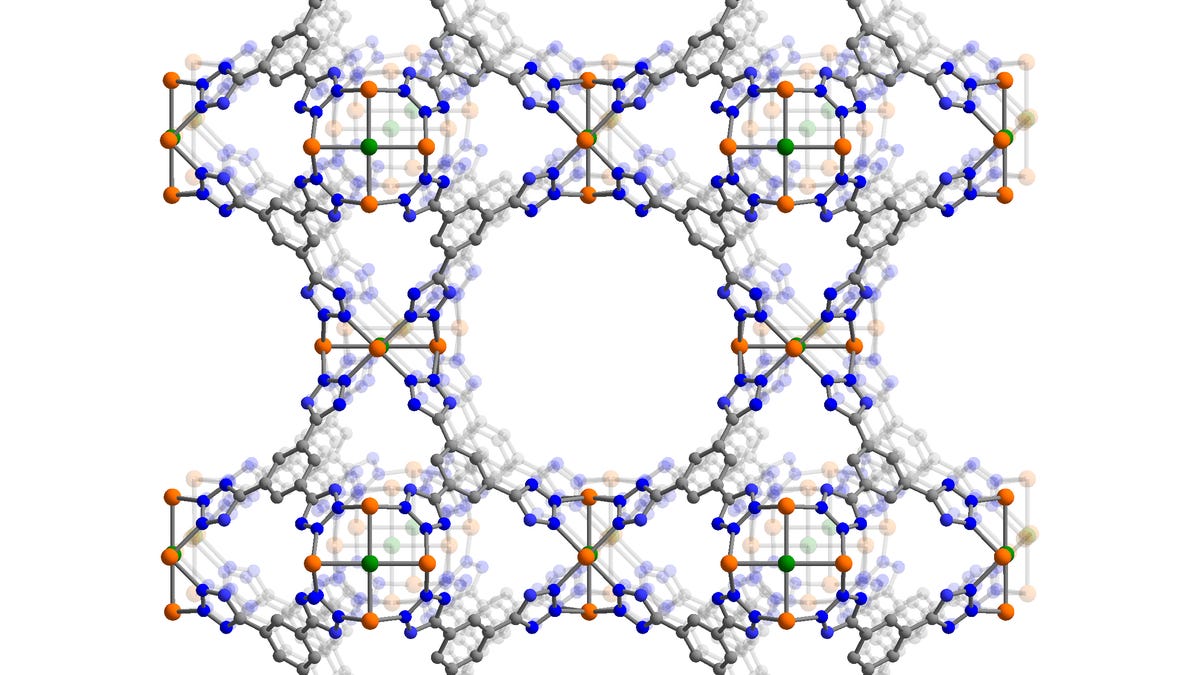Hydrogen 'sponge' could extend EV driving range
Novel molecules with as much surface area per volume as a football field could be used to store more hydrogen than compressed gas, extending the range of fuel-cell electric vehicles.

DOE researchers are going to the nanoscale to pack more energy into fuel cell vehicles.
Lawrence Berkeley National Lab yesterday detailed research plans for a three-year, $2.1 million Department of Energy-funded project to develop materials that would improve hydrogen storage. The basic research will include technical contributions from the National Institute of Standards and Technology (NIST) and General Motors.
Storage is one of the main technical barriers to hydrogen fuel cell vehicles. Today hydrogen gas is compressed to very high pressures and pumped into onboard tanks, but that method doesn't match the range of gasoline-powered cars. Also, energy is lost when the gas is compressed and expanded.
Berkeley scientists plan to store hydrogen in a very porous type of compound called a metal-organic framework. Inside the molecular lattice of these materials is a huge amount of surface area per volume, offering the promise of more dense hydrogen storage.
So far, the researchers have been able get certain metal-organic framework materials to attract a higher rate of hydrogen than previous attempts, but only at a very low temperature of minus 321 Fahrenheit or less. "Now we need to figure out ways of synthesizing the materials so that instead of one hydrogen molecule, we can get two or three or even four hydrogen molecules per metal site. Nobody's done that," said Berkeley Lab scientist Jefferey Long who co-leads the research.
High-end computing will play a significant role in the project as well. Long will be working with computational chemist Martin Head-Gordon to screen the millions of variations of metals and organic compounds that go into these materials.
In a separate effort with metal-organic frameworks, Berkeley is using a robot to create hundreds of different metal-organic frameworks and use X-ray diffraction to automatically evaluate their properties. In that case, researchers plan to use these compounds to capture heat-trapping carbon dioxide gas from the exhaust of power plants in a way that's uses less energy than current techniques.
Berkeley's project is part of $7 million the DOE awarded last year for fuel cell vehicles. The DOE has attempted to cut back funding for some fuel cell vehicle programs because of numerous technical and infrastructure barriers to being practical. The four DOE-funded projects last year are aimed at improving the compression of hydrogen storage systems and novel storage materials, such as metal-organic frameworks and liquid hydrogen refueling.
Corrected at 11:16 a.m. PT with details on funding and the role of NIST and GM.

